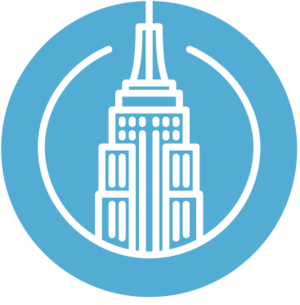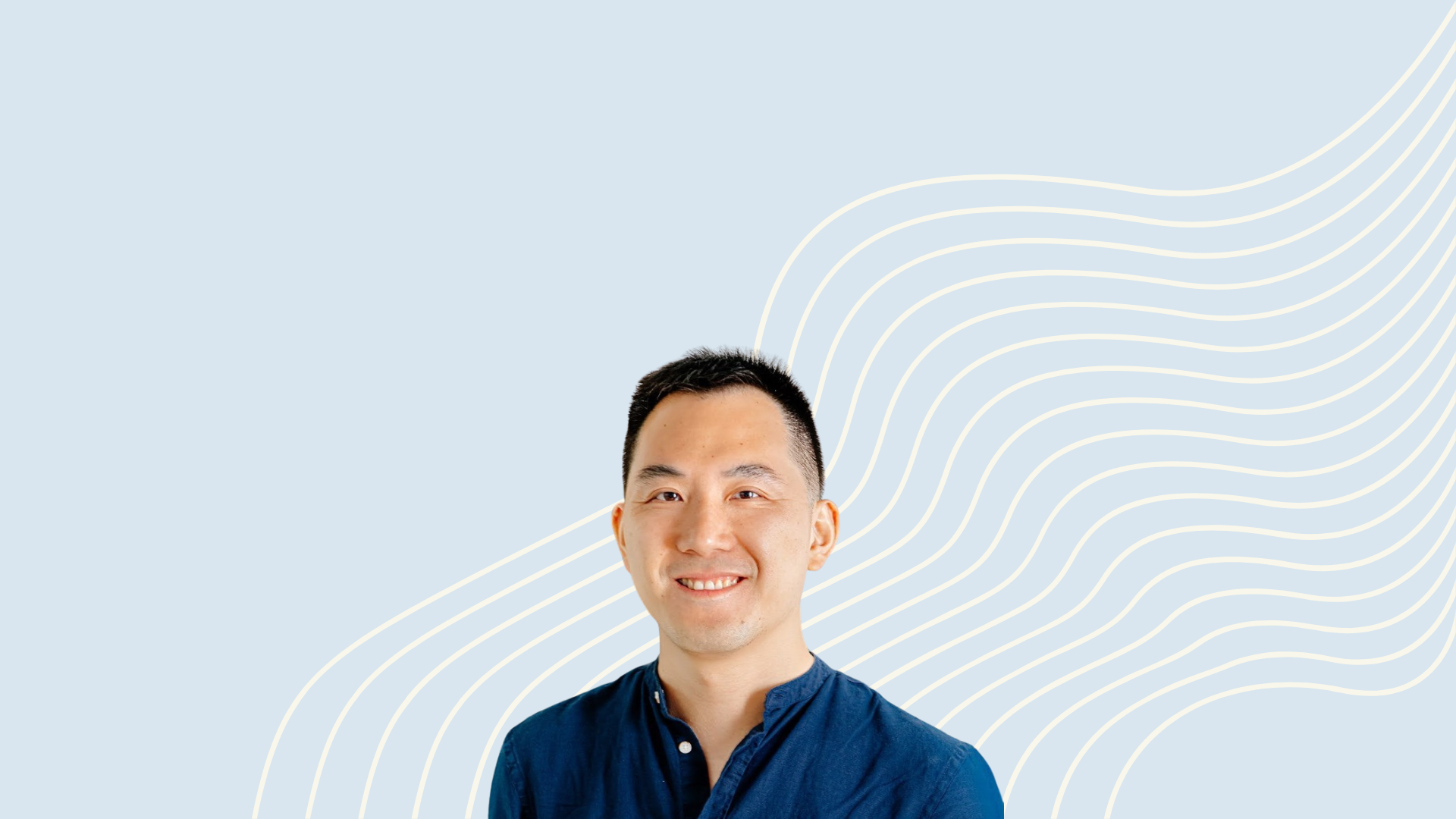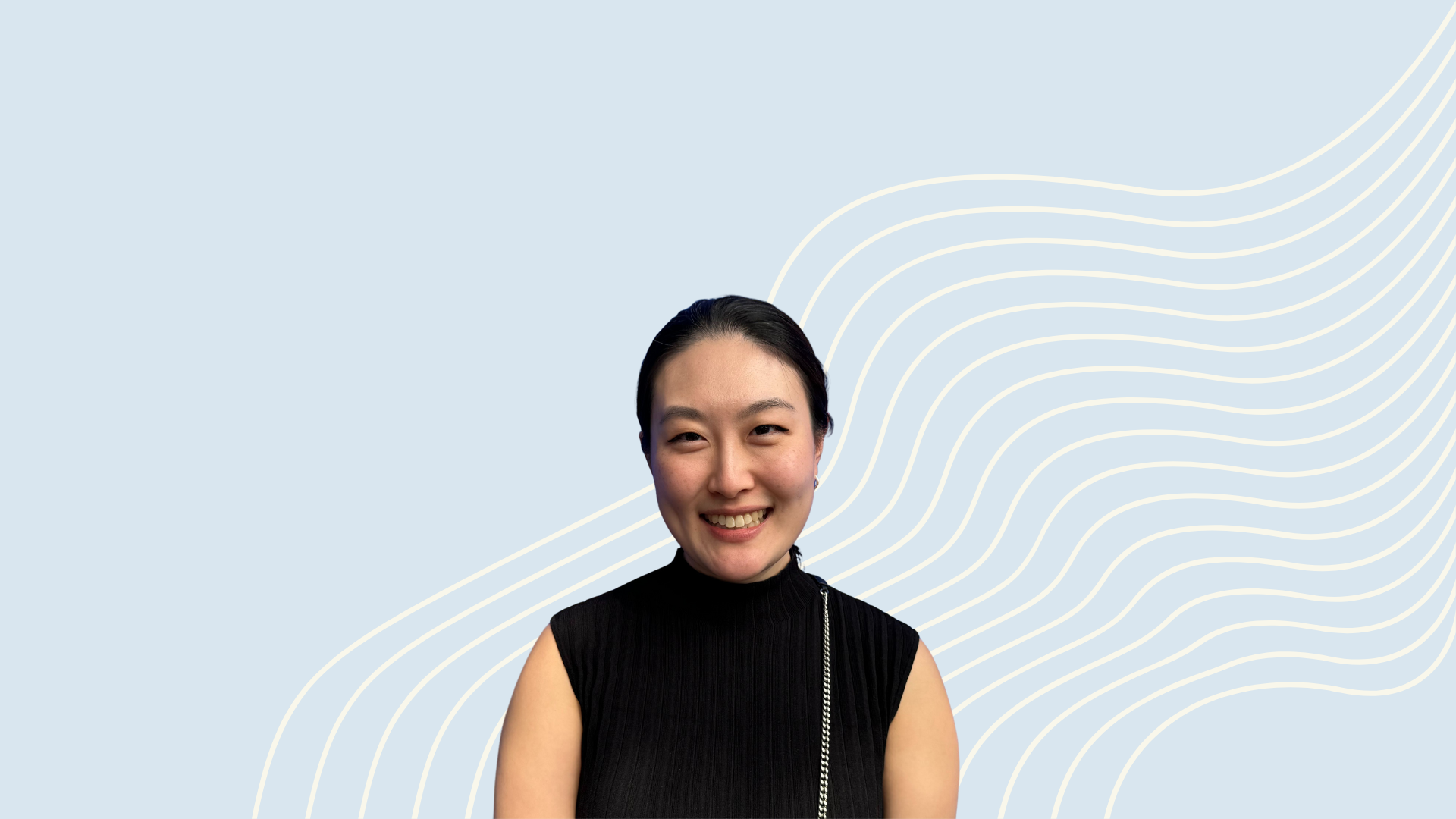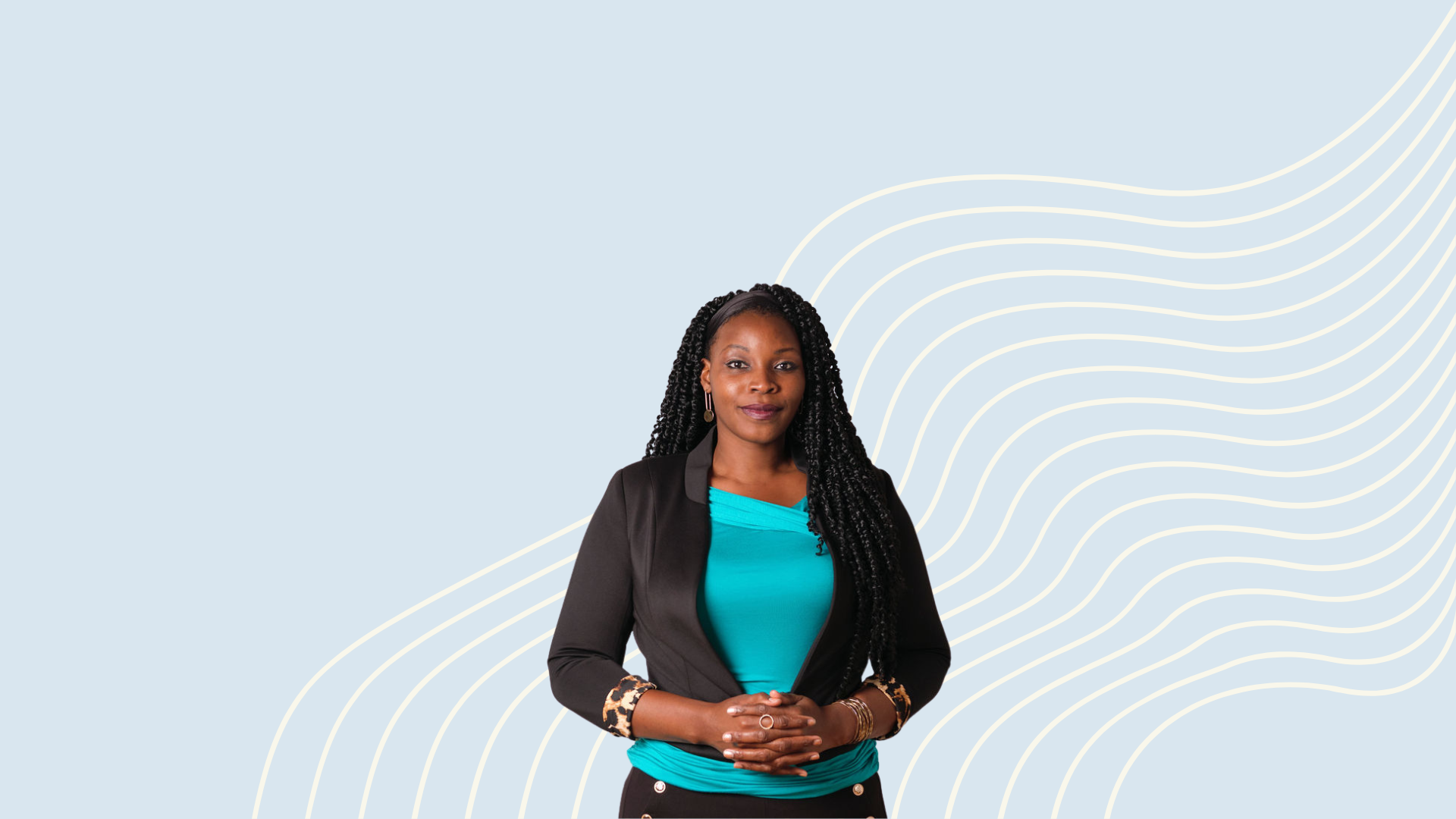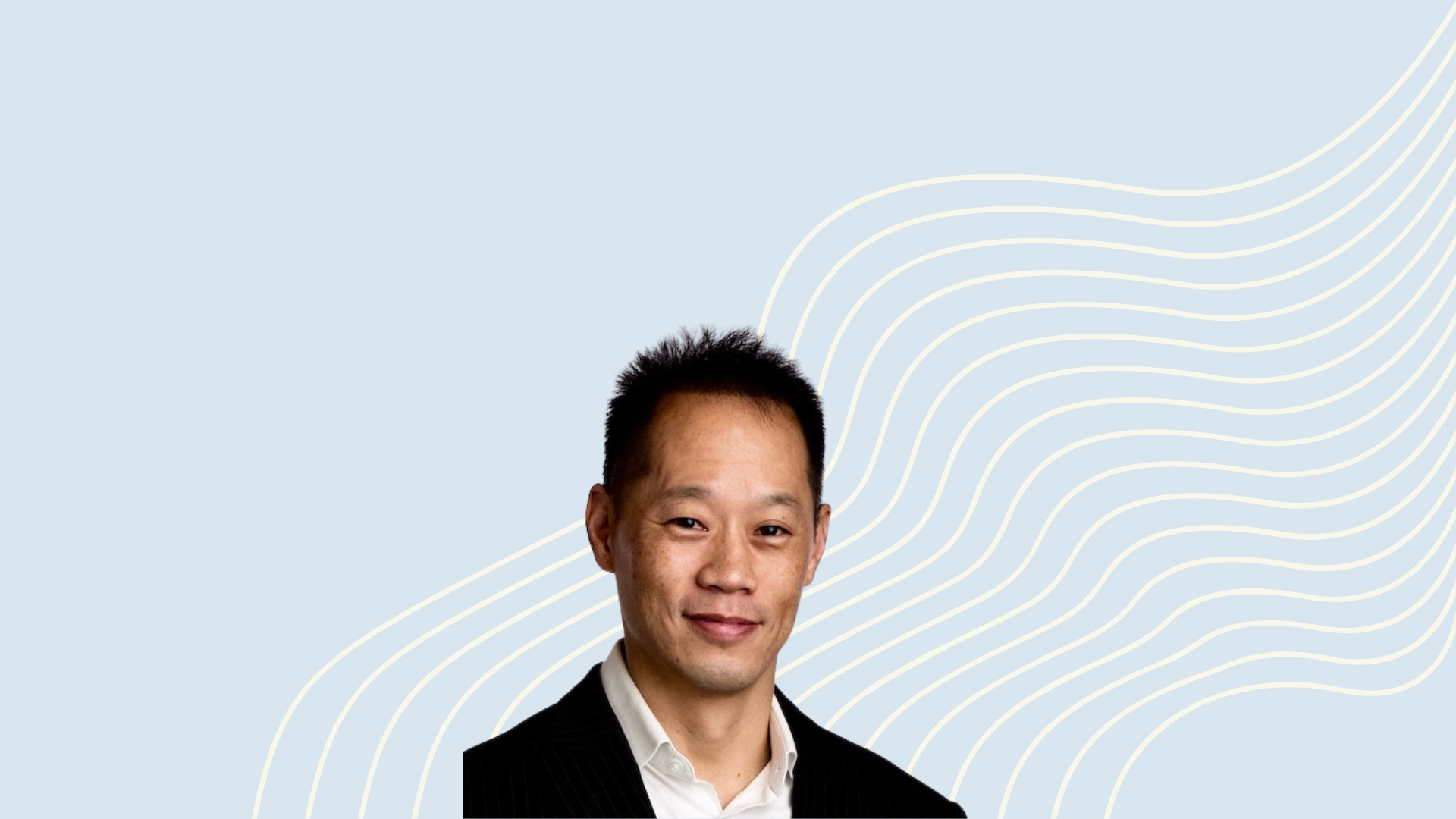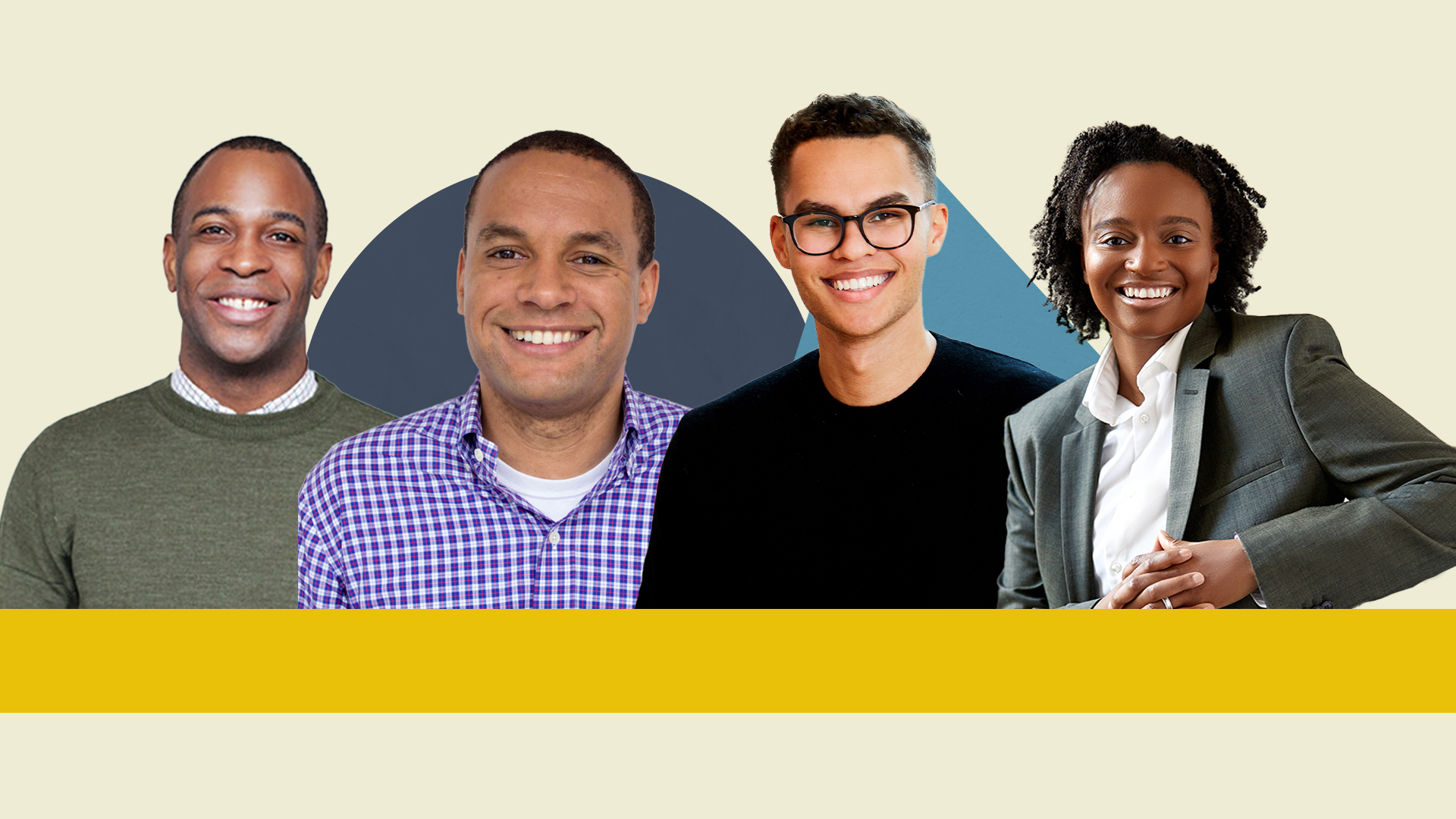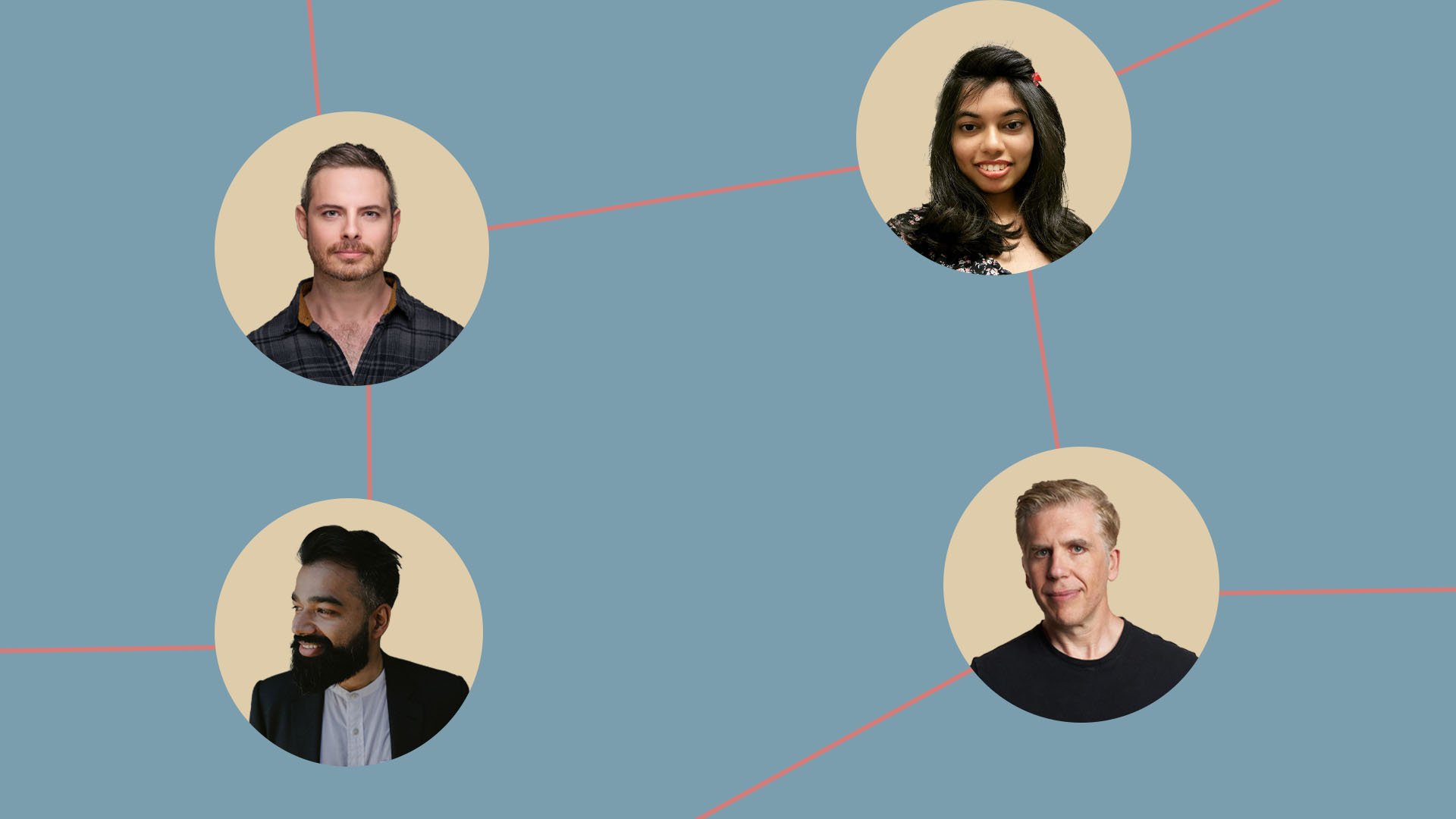Companies to Watch: Health & Wellness Tech (Part II)
As we detailed in Part I of our health and wellness tech Companies to Watch, New York City is leading the way in health and wellness innovation. In the first half of 2024, the city’s health tech deals were up 35% year-over-year, bringing in $2.2 billion in venture capital money.
Across the U.S., in Q3 2024, the digital health sector brought in $2.4 billion in venture funding across 110 deals, bringing year-to-date funding to $8.2 billion, meaning the average check size has been holding steady.
When it comes to artificial intelligence, venture capital investments in New York-based health companies using AI have surpassed $1 billion in 2024, up from $670 million in 2023 and $530 million in 2022, according to PitchBook.
So it’s no surprise to see that the founders in our inaugural Startup:NYC cohort are continuing to grow.
We caught up with four more founders from the Startup:NYC cohort who are innovating in specific sectors of the health and wellness space – dental platforms, behavioral health, physical therapy, and caregiving – and addressing inequities in the health and wellness tech ecosystem.
For this edition of our Companies to Watch series, meet KELLS, Lucid.Care Labs, TheraMotive, and WD-Home.
KELLS
Jie Feng
“Building a startup is a marathon not a sprint, successful companies have the ability to adapt to the ever — changing market without losing sight of the vision.”
What does your company do? What problem is it working to solve?
The dental care experience today is largely considered inconvenient, confusing, and expensive. Over 100 million people in the U.S. are not able to access dental care every year and up to 50% insured employees are not leveraging dental insurance benefits. This results in undiagnosed oral disease and delayed treatments which lead to estimated $45 billion productivity loss and $160 billion overall dental costs. Poor oral health also leads to higher risk of chronic disease that impacts overall wellness and creates larger medical costs.
KELLS is an AI-powered dental benefits platform designed to be a personal companion to make oral care more accessible, transparent, and affordable. It offers a comprehensive suite of digital services to allow members to get a virtual checkup at home, request a virtual second opinion on a treatment plan, receive real-time consultation on dental concerns, and more. Additionally, KELLS provides access to a national dental provider network with discounted rates whether you have insurance or not, helping individuals manage their oral health and reduce costs with a focus on convenience and prevention.
A question we like to ask every founder – Why New York?
I came to New York in 2012 for a Ph.D. program at Columbia and have not moved since. Despite having lived and worked in different parts of the world, there is no place like New York that draws me with its diversity and energy. The community here keeps me on the ground and I love talking to people with different backgrounds and always learning new things.
New York is also undoubtedly one of the most vibrant cities for the startup ecosystem. Here you can find everything needed to build a company without the boundaries of industries. The sheer population in the city makes it a perfect place to build a health and wellness company that requires a unique perspective on how things can be done differently.
How do you view the tech sector’s role in transforming healthcare in America?
Technology is a fundamental enabler for healthcare to deliver at scale and perform at the consistent high quality level. The tech sector has a critical role in transforming healthcare by improving access, efficiency, and personalization. Through innovations like telemedicine, AI, and digital health platforms, technology can bridge gaps in care delivery, reduce costs, and empower patients to take control of their health. This shift will continue driving a more consumer-centric, preventative, and data-driven healthcare model in America.
What role do you see AI playing in the future of healthcare?
I believe AI will profoundly transform the future of healthcare just like any other industry. It will allow us to enhance diagnostic accuracy, enable personalized treatment plans, automate administrative tasks, and improve patient engagement. It will support clinicians by analyzing complex data faster, identifying patterns, and predicting health outcomes, leading to earlier interventions. AI presents a key opportunity that can democratize expertise at different levels to create a more efficient, accessible, and patient-centered healthcare system, both in the U.S. and globally.
How does KELLS incorporate AI into the process of being a dental companion?
We develop proprietary AI at KELLS to provide advanced dental care solutions, such as analyzing at-home dental scan images, verifying treatment recommendations with X-rays, and offering personalized care navigation and recommendations. AI helps identify potential oral health concerns early, supports accurate decision-making, and enhances the overall efficiency of dental consultations, making care more accessible and cost-effective for individuals and businesses.
How does KELLS make dental care more accessible, and why is it important to make dental care more accessible?
Your mouth is the gateway to your whole body and dental problems not only impact your oral health but also are closely linked to overall health. Undetected and untreated dental issues like cavities and gum disease (impacting one out of four Americans today) can escalate to more severe conditions and increases risk for chronic conditions like heart disease, diabetes, and more. Making dental care more accessible is essential to prevent and manage these risks consistently, reduce healthcare costs, and improve quality of life. It also can reduce disparities in care, ensuring everyone can maintain good oral health regardless of their socioeconomic status or location.
KELLS makes dental care more accessible by providing virtual dental services at your fingertips that reduce common barriers like cost, time, and location. Through its comprehensive digital platform, anyone can access capabilities like AI-powered dental scan, virtual second opinions, and on-demand consultation. These services help identify existing conditions and future risks, understand treatment needs with cost estimates, and receive personalized recommendations to improve. KELLS also helps facilitate follow-up care with a dentist via care coordination and offers discounted pricing for dental procedures.
As a founder, what’s your self-care routine to recharge while still being heads down building a company?
Everytime I want to take a break, I walk. I enjoy an early morning walk in my neighborhood to start the day with a fresh mind. I walk to think about an important decision or before a demanding call to relax myself. Having some alone time has been beneficial and helps me to go back to work more productively.
Time for some New York-themed rapid fire questions – Where’s your favorite place to grab a slice of pizza in New York?
Abitino's Pizzeria Rock Center.
Where’s your favorite coffee shop in New York?
I’m not a coffee person but I love hot chocolate. I always grab one when I see Le Pain Quotidien nearby.
Do you have a favorite spot to escape the noise of the city?
I love hiking at Catskill in upstate New York, especially during the Fall to appreciate the seasonal beauty.
What’s one piece of advice – that you shared or was shared with you – on building a startup in New York City?
Building a startup is a marathon not a sprint, successful companies have the ability to adapt to the ever-changing market without losing sight of the vision.
Lucid.Care Labs
Clara Guo
“Never be the smartest or most successful in the room. Surround yourself with those who inspire and push you forward.”
What does your company do? What problem is it working to solve?
Lucid catalyzes the path to precision psychiatry by using our day-to-day data for clinical care.
In 2023, more than 65 million Americans received mental health treatment – but treatment too often fails. In fact, up to 60% of patients are treatment resistant.
Why? Care is episodic and subjective, and our understanding of psychiatric diagnoses and treatments is blurry. To quote a Deputy Chair of psychiatry, “we take bad data and apply bad algorithms” in patient care. Treatment is conversational, but 85% of mental health patients struggle to communicate with their clinician. In other words, clinicians do not have all the data they need to make treatment decisions. Because of this “Data Gap,” treatment is often guesswork – educated guesswork, but guesswork nonetheless.
Lucid reduces that guesswork. With a patient-facing mobile app and a clinician-facing report, we bridge the Data Gap to inform clinical care and build a stronger therapeutic alliance. With time, we build a multimodal database tailored to mental health, combining self-report with an extensive array of passive data and medical data to further our understanding of mental illness.
A question we like to ask every founder – Why New York?
Quite simply – it’s intoxicating! There are so many opportunities to meet amazing people, and the healthcare ecosystem is robust and innovative.
How do you view the tech sector’s role in transforming healthcare in America?
I’m both excited and cautious about the role of tech. Healthcare, and especially mental health care, needs to change – that’s a given. But we must balance the speed of technology with the consequences on real people’s lives and the nuanced complexity of U.S. healthcare, especially the differing motivations of each stakeholder. There’s room for transformation – thoughtfully done.
What role do you see AI playing in the future of healthcare?
AI will be transformative. There’s so much opportunity for AI to accelerate personalized, data-driven, and proactive care. We’ve already seen multiple theses around the use of AI to streamline workflows, reduce administrative burden, and simplify systems. We are in the nascent stages of using AI to change the delivery of care itself and to reshape what it means to be clinician.
As a psychiatrist-in-training, I’m watching cautiously – “first, do no harm.” As a clinician entrepreneur, I’m excited – AI allows us to center our patients, providing a path to helping patients better understand their own health and be agents leading their own care.
How does Lucid incorporate AI into the process of improving mental health care?
We use AI for patients, clinicians, and the field of psychiatry. At a high-level, we apply ML to unstructured, multimodal data to push our understanding of mental health forward.
For patients, we provide personalized insights that combine mental health, physical health, and social health. We move toward a virtual health assistant that analyzes user-generated expression tools (like voice journaling) and provides support. We help clinicians make sense of all of that data. As clinicians, we need certain pieces of data from patients that we know, for a fact, impact recovery. We provide this data and use machine learning to predict what’s important, like substance use. Our goal is to shorten the time to the “right” treatment – whether that’s the right diagnosis or the right medications and therapy.
In psychiatry, there’s a lot of noise in our diagnostic categories, and our predictive capabilities of risk are poor. With time, we use ML to better understand behavior, mental health, and risk, as we build “mental health labwork” applicable to not just psychiatry but, one day, all of medicine.
As a founder, what’s your self-care routine to recharge while still being heads down building a company?
I love spending time with loved ones – my spouse, my family, and, of course, an amazing support system of friends. I love journaling – I’ve been doing it since kindergarten (albeit infrequently); it’s one of my favorite ways to reflect.
I also try my best to stop burn out before it happens. I know my own warning signs – taking an extra day to respond to an email, watching TikTok too late at night. And when they happen, I know to take a step back, reach out for help, and take a day or two off (since most founders work weekends anyway). Sometimes, self-care is hard. It’s discipline. And I need to remind myself that it’s important to be a founder who always has her foot on the gas pedal, but not always at full throttle. Screw up, acknowledge it, learn from it, and move on with the lessons learned.
Time for some New York-themed rapid fire questions – Where’s your favorite place to grab a slice of pizza in New York?
This may be a hot take – I split my time between New Haven and New York. I think the pizza in New Haven is better!
Where’s your favorite coffee shop in New York?
Daniel’s Coffee on 62nd & 3rd! The best honey oat milk latte.
Do you have a favorite spot to escape the noise of the city?
Honestly, my own apartment!
What’s one piece of advice – that you shared or was shared with you – on building a startup in New York City?
Never be the smartest or most successful in the room. Surround yourself with those who inspire and push you forward.
TheraMotive
Lola Omishore
“In healthcare, we have the unique responsibility of using innovation to serve the greater good.”
Lola Omishore was featured in our October Companies to Watch blog of Founder House alumni, which you can read here. However, we caught back up with TheraMotive this month to get the latest updates on the company.
What updates have there been to TheraMotive since we last spoke?
TheraMotive made big strides in strategic partnerships and recognition. We secured a pilot program with NY's top-ranked hospital, Mount Sinai Health System, and a partnership with NY's top federally qualified health center, "Ryan Health," to expand our reach to over 50,000 New Yorkers. We have pending partnerships with government agencies and non-profit organizations (Volunteers of America) to expand TheraMotive nationwide.
We've garnered national recognition with partnerships with the American Heart Association, features on broadcast television, winning the Queens Tech Innovation Challenge ($20,000 prize), and being selected as a Tory Burch Foundation Fellow ($5,000 prize), and a Project W Tech Equity Hub Fellow ($5,000).
Our customers (3 B2B enterprises) are thrilled with the convenience and quality of care that's offered through TheraMotive. They've replaced their longstanding physical therapy vendor with TheraMotive.
Thus far, we have a 100% patient retention rate, 96% attendance rate, and are averaging $1200-1500 daily revenue at a 40% clinic utilization rate in less than one month of operation.
When and how did you become passionate about improving the physical therapy industry?
When we talk about underserved communities, we're often talking about Black and Brown communities. The stark reality is that in areas with fewer resources, people of color face significantly shorter lifespans (14 years shorter) and that is a clear indication of how deeply healthcare access is intertwined with racial and economic lines.
The next big disruption in physical therapy is moving care beyond the clinic walls to meet people where they are, both in person and virtually. TheraMotive is driving this mission forward with our innovative hi-tech clinic on wheels model.
Our vision is to build, partner, license, and scale our business model across the nation. Through our licensing model, our mission is to scale innovative care across the country, by building and deploying 500 AI-powered mobile clinics across America over the next 10 years.
TheraMotive is playing a major role in building the future of physical therapy with a hybrid approach that combines on-demand mobile care delivery, virtual care integration, and the latest in health technology and machine learning. Our mobile clinics are equipped with AI, virtual reality, and wearable tech, enabling personalized, data-driven treatment plans.
We partner with healthcare systems, corporate health, and health-tech companies to expand their reach without expanding their budget.
The future of physical therapy will offer care that's flexible, technology-enhanced, and meets patients where they are – and that's exactly what TheraMotive delivers.
What role do you see AI playing in the future of healthcare?
In healthcare, we have the unique responsibility of using innovation to serve the greater good. Increasing access to physical therapy is TheraMotive’s north star and the barometer we use to ensure that we use AI for good.
The healthcare system is ripe for innovation across the board. However, the trends toward a purely digital health SaaS model fall short of both patient and clinician expectations and have led to recent downfalls of major digital health companies such as Pear Therapeutics.
I created TheraMotive as a hybrid model that embraces the best offerings in health technology while maintaining the human element of healthcare that appeals to both clinicians and patients. The key to widespread acceptance of a digital healthcare model by healthcare providers and patients lies in integrating clinician-led innovation as a crucial component of success.
WD-Home
Wilson Wang
“The tech sector has a dual role in health: To facilitate that which humans cannot do well enough, but to not get in the way of — even foster — human interactions when situations demand it.”
What does your company do? What problem is it working to solve?
WD-Home has built an app for caregivers of older persons living at home or in assisted living. Up to this point, health tech has focused mostly on the young and clinics. Caregivers in contrast have been mostly ignored. Older people – forget it!
With WD-Home, caregivers are equipped with tools befitting of health professionals. Inputs on what they see and do produce actionable data used to reduce caregiver stress around scheduling and workload distribution. In addition, inputs can signal when older persons are becoming sick, alerting caregiver leadership of gaps, such as derangements in urinary output or increasing pain, in time for community-based interventions. Bottom line, WD-Home can decrease 911 calls and hospitalizations 40-50%! Scaled, that’s hundreds of thousands of dollars in savings to caregiver agencies; billions of dollars in savings to the critical but teetering Medicare insurance program; and an infinite amount to families of older persons who only want their loved ones safe and engaged.
A question we like to ask every founder – Why New York?
After a career in international health for more than seven years in Rwanda, Liberia, and Indonesia, my wife Seongeun informed me upon finding out that she was pregnant that “we are not having our baby in the Congo.” It was Seongeun’s turn to call the shots. She had let me choose our first set of destinations. She wanted to return to the city where we met, which was New York City, so we did.
Back home I had to reinvent myself. I allotted myself one week of depression, then transformed myself from a former expert in health policy and international health programming, back to a pediatrician seeing patients and a teacher – this time at NYU’s School of Public Health. I started a health software company called Walking Doctors that addressed high rates of medical errors in the places I had worked. This would eventually spawn domestically, WD-Home: An app for caregivers of older persons to keep them in a safe and engaged community.
How do you view the tech sector’s role in transforming healthcare in America?
The tech sector has a dual role in health: To facilitate that which humans cannot do well enough, but to not get in the way of — even foster— human interactions when situations demand it. Currently, formal caregivers of older persons chart on paper, not at all, or on electronic tools that have little practical function. This has to change for the simple reason that any profession that is respected and well-paid, documents the work done and impact.
While our app puts a window to the important work of caregivers and the health status of older persons, it is not a substitute for the role families and neighbors must play in the social engagement of older persons and how society treats its working-class backbone. Entrepreneurship in the older person care space can be very sad if framed as the forgotten taking care of the forgotten. But just one day spent with older persons with their caregivers reframes the challenge. The potential of the relationship – aided but not supplanted by technology – is striking. The high stakes of working for the protection and respect of millions is clear.
What role do you see AI playing in the future of healthcare?
AI allows for rapid filtration of data for meaning. AI can already replace the radiologist in identification of infection and cancer from a hundred years of film and scans. My international company called Walking Doctors produces a checklist-based electronic health record to prevent mistakes. Those checklists took me over three years to construct. AI can build them in five minutes.
In WD-Home, we use AI to run through the prescriptions of older persons who get their meds from caregivers. These lists average 10 medicines long given several times a day. Fifty percent of the medicines have severe side effects. About 40% of the medicines are not evidence based and can be dropped. With AI we can shorten and idealize a persons’ medicines and send a revised medicinal regimen to families and caregiver leadership for reconciliation with their doctors. When events happen, we can see what medicines were given at the time to enhance our emergency risk warning system.
In short, AI is great. It’s not going anywhere. You just have to teach it what you want it to do and be clear of the purpose which is hopefully for good.
When/how did you become interested and passionate about supporting caregivers and older persons?
While visiting extended family in Los Angeles, I discovered that my cousin owned an assisted living community. I asked to see it. What I saw was very sad: Venerable interesting noble individuals living but isolated. Hardworking, creative, loving caregivers doing what family members could not; would not. I was galvanized to respond.
I became a caregiver for a week. Then I became a caregiver for another week. Then I made my students become caregivers. I began to see the opportunities. I tested out hypotheses. I asked for wants and pain points. I talked to my colleagues while helping to wash, change, feed, move, bathe, dress and entertain older persons. This was the hardest work I have done since I was a public-school teacher in Oakland in 1992! I couldn’t wait for the days to be over. But I also knew what I was experiencing was unique, important, even self-defining. I felt like I was back in Rwanda again. But this was East of LA.
Why is it important to quantify and organize caregiver work?
In addition to all the moral reasons to organize caregiver work better, we must do more to decrease U.S. healthcare costs. Older person hospitalizations are the main driver of America’s healthcare financing problem. This problem is enormous. There’s a term in finance called net present value. It’s the amount of money you have to put aside today to pay for your obligations tomorrow. Well, the net present value debt of Medicare, which insures Americans over 65 years old is $47 trillion dollars. To put this amount in perspective, the net present value debt of social security is $21 trillion dollars. The annual U.S. budget is $7 trillion dollars.
So, we have to prevent older persons from literally falling sick. We can start with obvious things like making sure their medicines are safe or that they eat, drink and excrete sufficiently, across a population. The technology can start with formal caregivers because they are organized and paid. But there are 41 million informal caregivers taking care of their loved ones at home. They too need care organization tools, especially across family members caring for parents and grandparents carrying multiple diagnoses with age not being one of them.
As a founder, what’s your self-care routine to recharge while still being heads down building a company?
My wife Seongeun and daughter Drew are people who I would be foolish to neglect. We love hanging out even if it has to be scheduled! I also play basketball outdoors every weekend in Chinatown on Grand. Street. This game is hilarious. It’s competitive but the age range of the players span 20-70 years. It would not be uncommon for me to jump over someone on the way to the basket or someone to (try to) do that on me. Of course, I am teaching Drew to play. Family and basketball give me all the energy I need.
Time for some New York-themed rapid fire questions – Where’s your favorite place to grab a slice of pizza in New York?
Joe’s.
Where’s your favorite coffee shop in New York?
I make my own coffee.
Do you have a favorite spot to escape the noise of the city?
I still consider myself from the Bay Area. Every time I go back there, I can’t fathom the relative peacefulness and brightness.
What’s one piece of advice – that you shared or was shared with you – on building a startup in New York City?
Do it all in community: Have a cofounder whom you regard as teacher and friend. Live your problem because lives depend on it. Ask for help from all whom you know: If they won’t help, who will?
